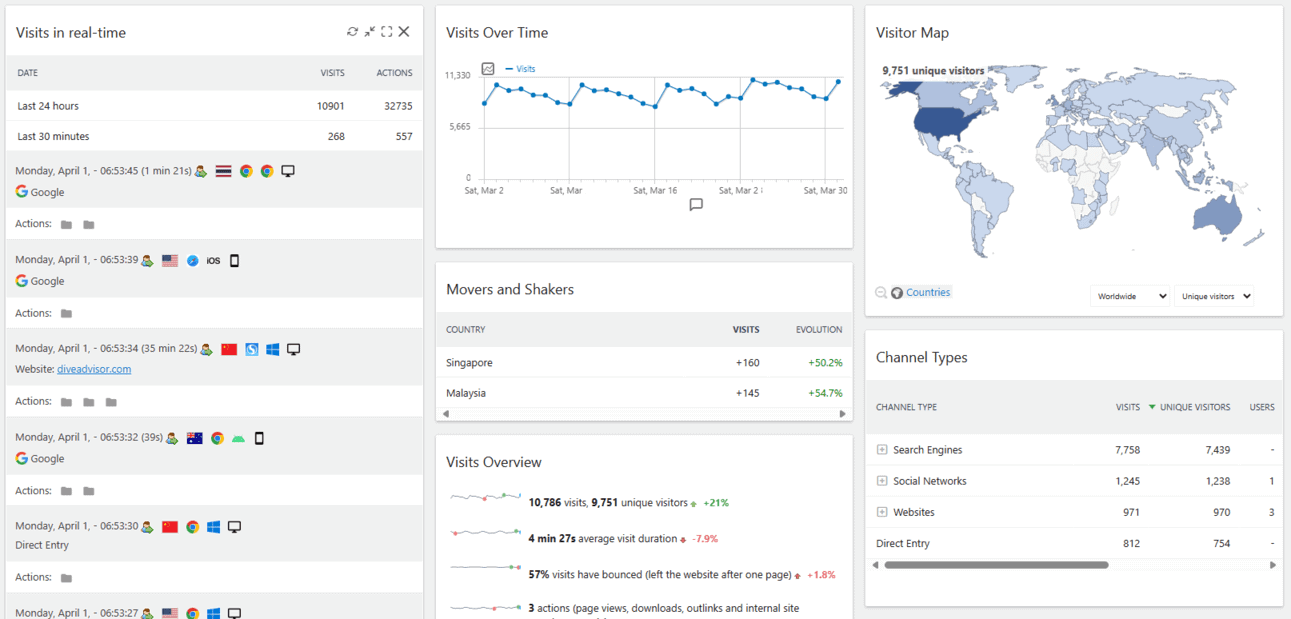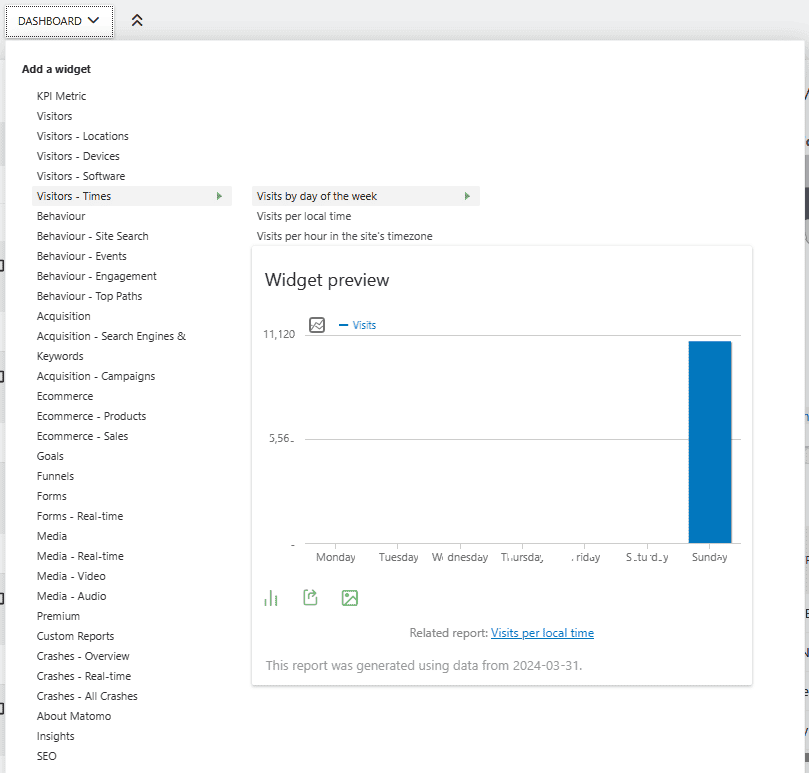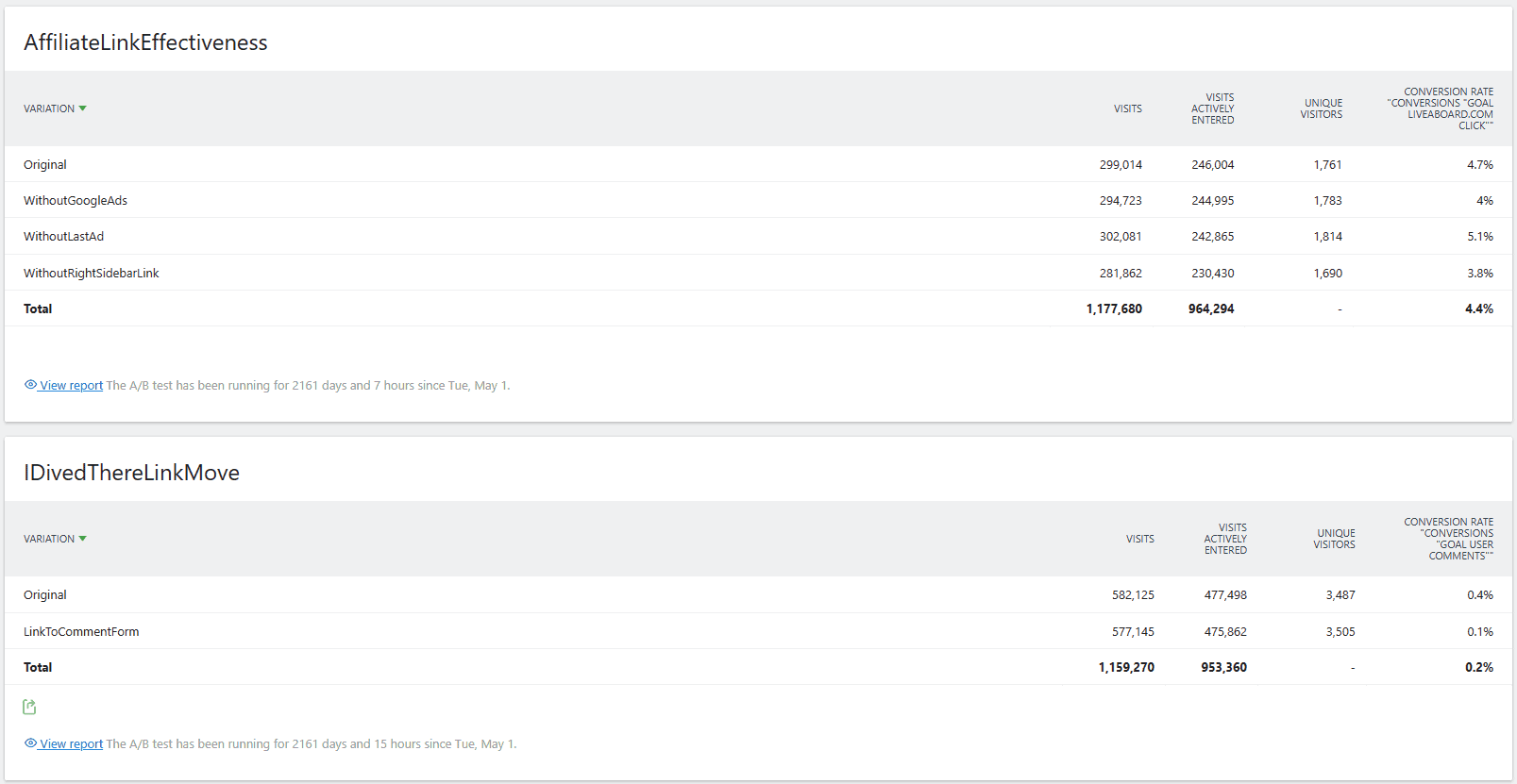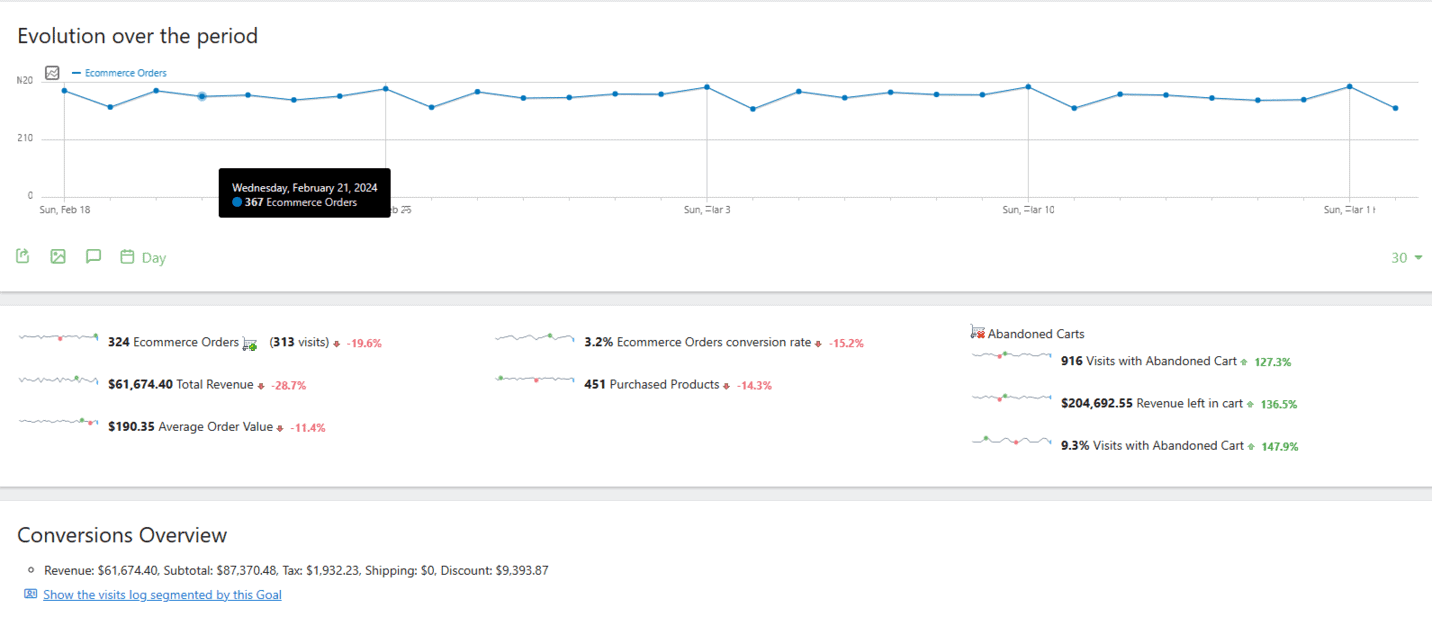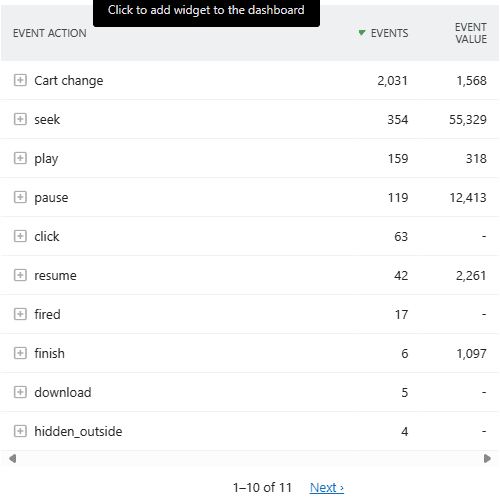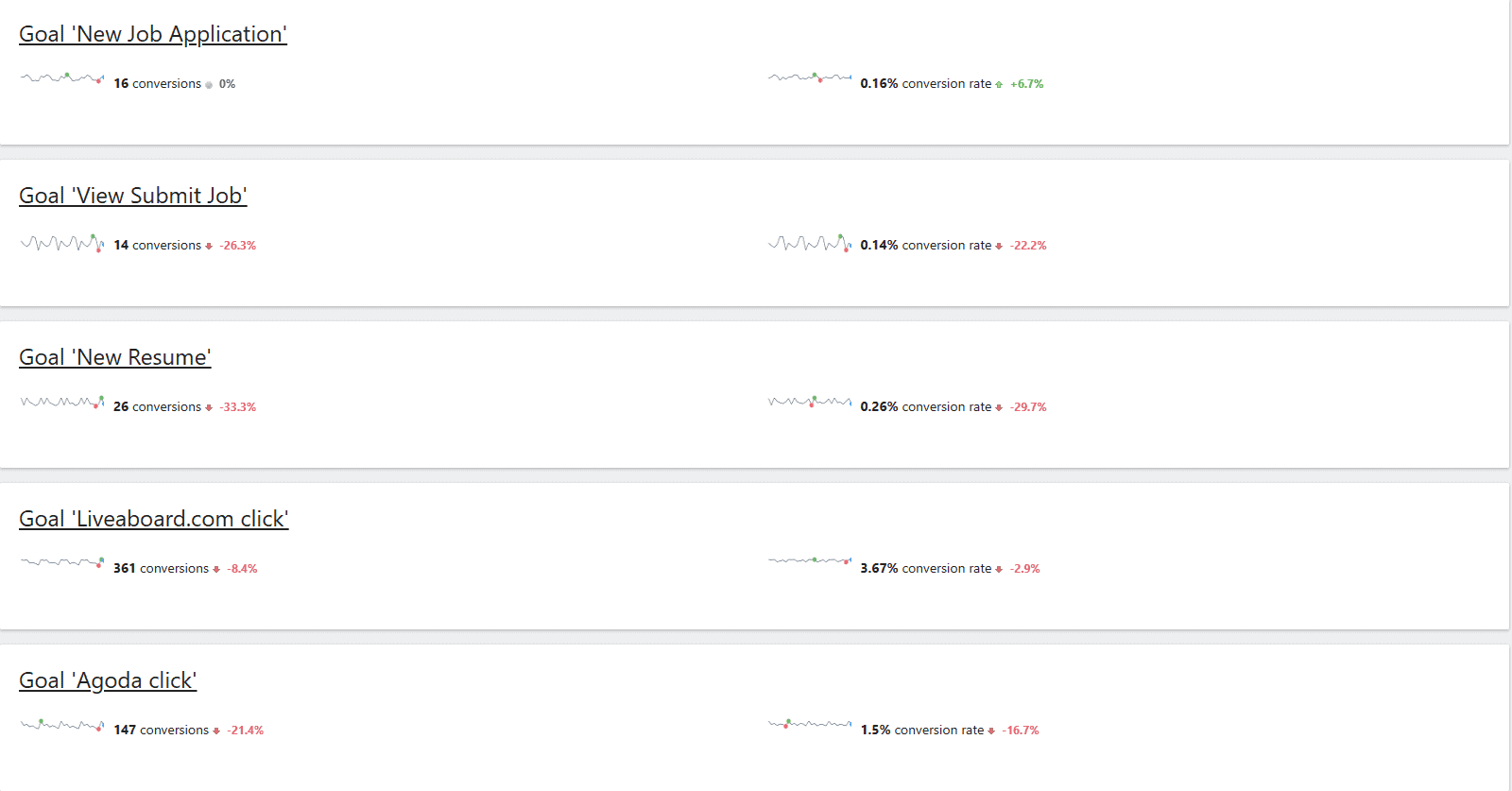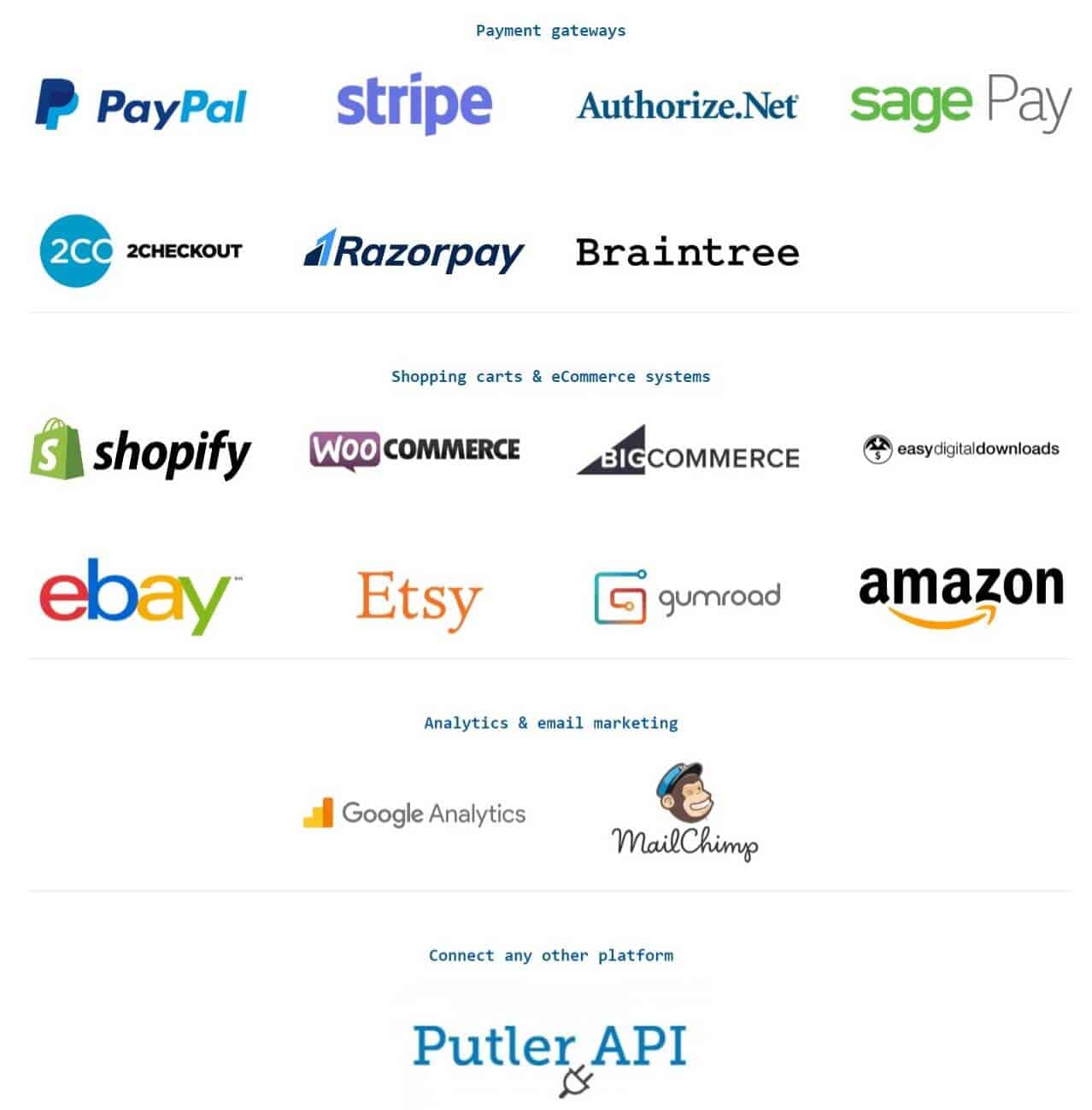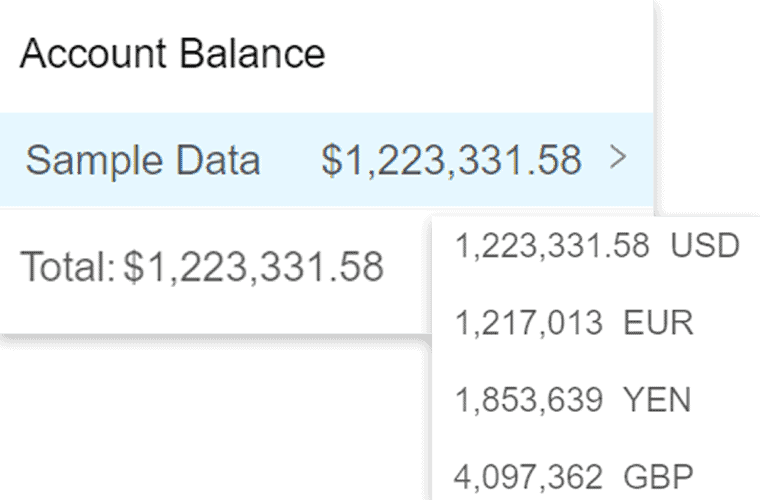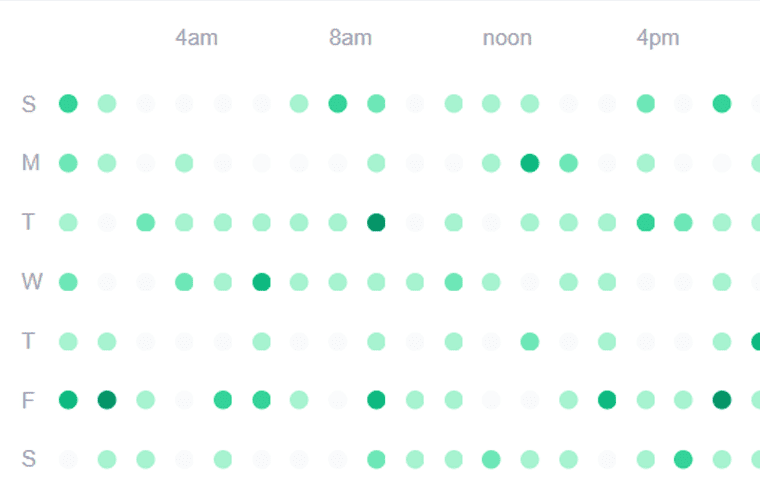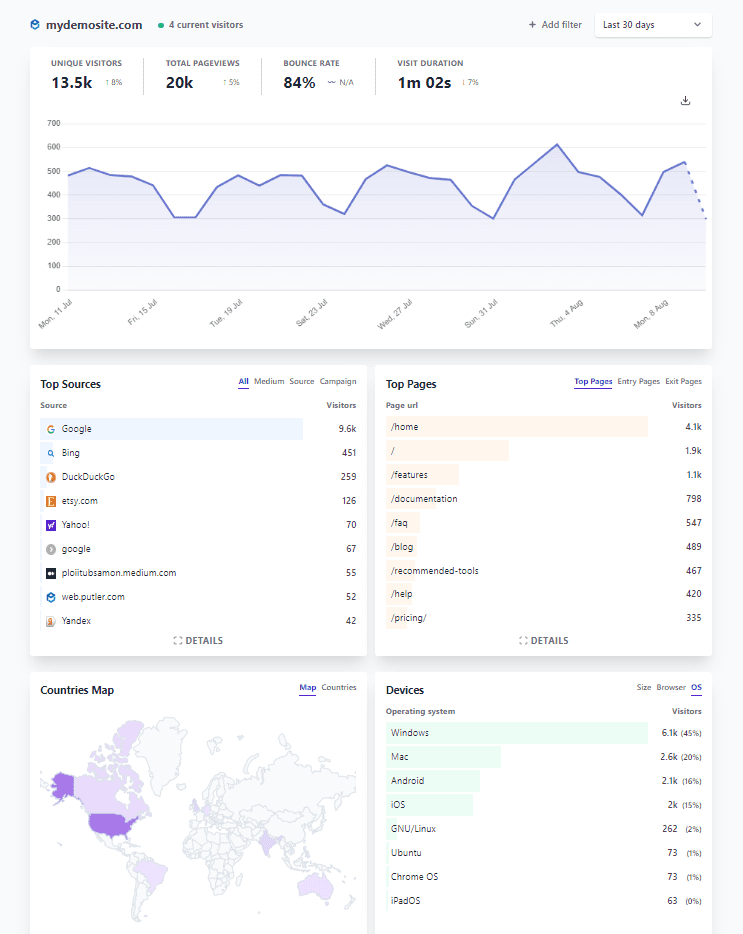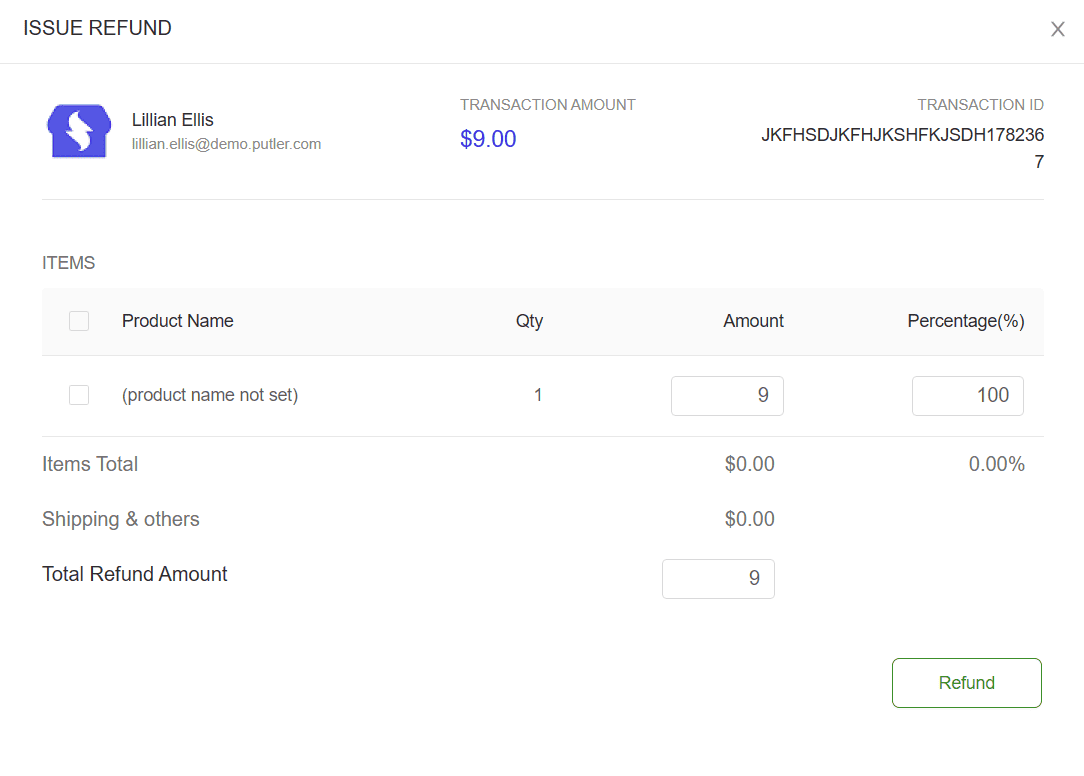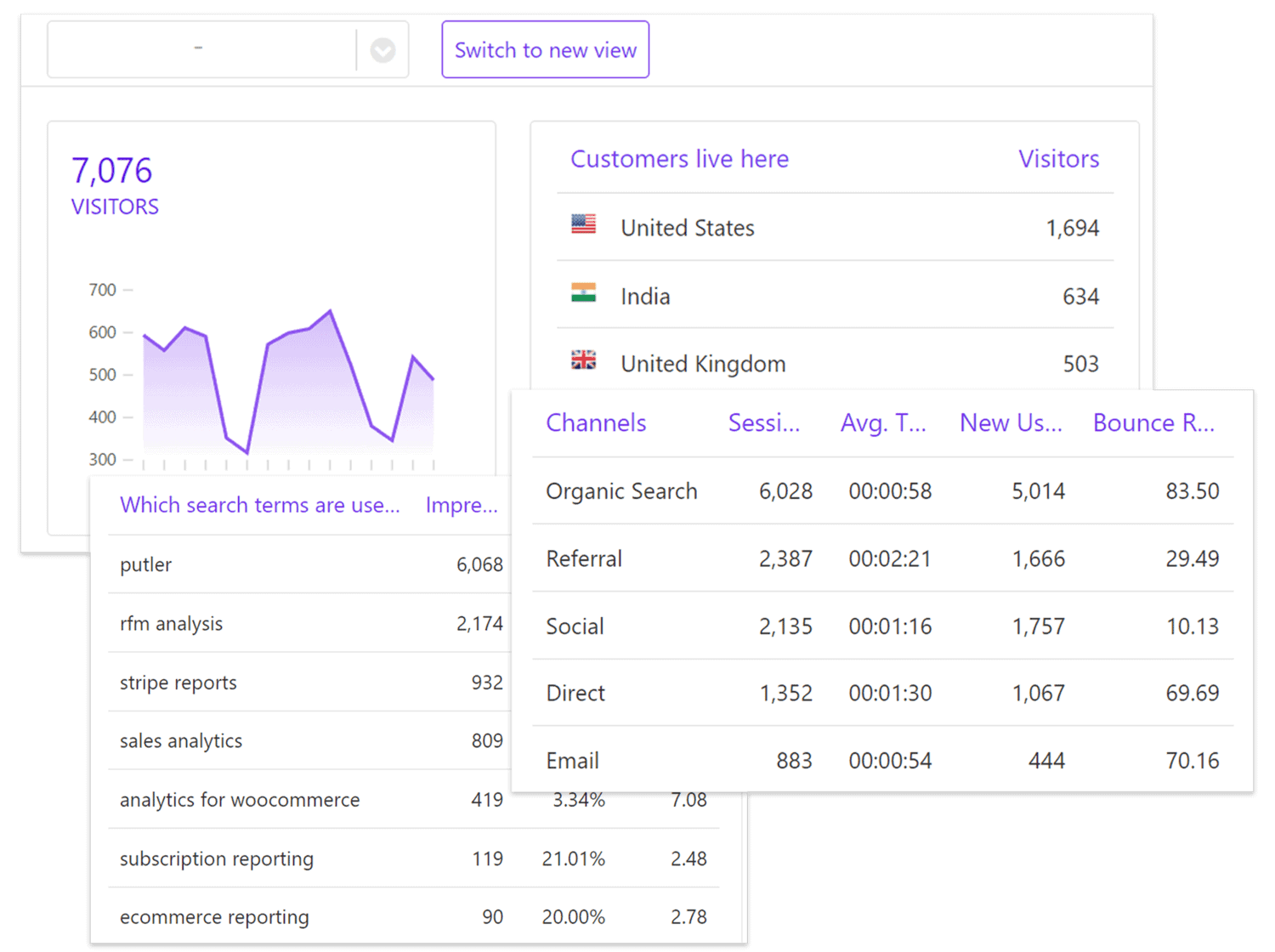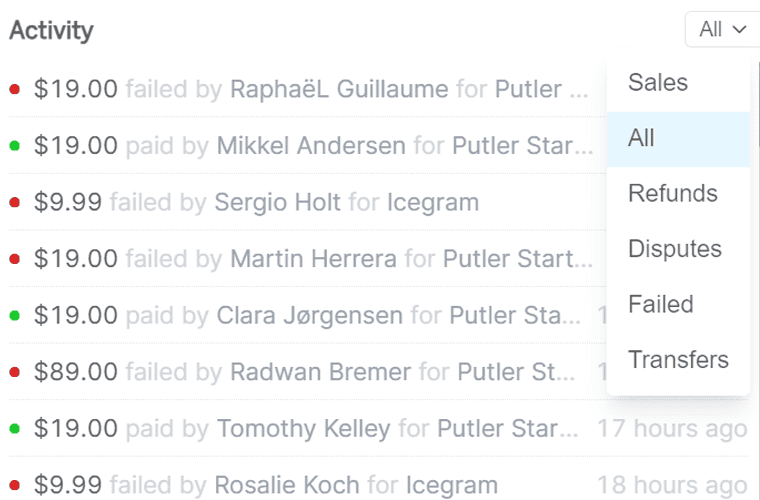Navigating the analytics tool market for your online business can be overwhelming.
And, if you too are struggling to figure out which analytics tool to choose from multiple options, Matomo Analytics and Putler can be the ones to consider.
These two tools offer unique features around e-commerce and web analytics.
Matomo is all about privacy and provides detailed web analytics.
On the other hand, Putler is known for its valuable insights for e-commerce and SaaS businesses, and its user-friendly interface.
But with two great options, how do you decide which one is right for you?
Don’t worry! In this guide, we’ll look closely at each tool to help you make the best choice for your business.
So, let’s dive in!
What Is Matomo?
Released in 2007 as the first Google Analytics alternative, Matomo is an open-source analytics platform powered by a strong community.
It’s a top choice for data-sensitive businesses, allowing them to store their data on their servers.
Motomo primarily has web analytics capabilities with limited e-commerce analytics.
Benefits of Matomo Analytics
Here are some of the standout benefits of Matomo analytics:
Free of Cost: If you use your server to store data, then the basic analytic features of Matomo cost no money.
These features include customer segmentation, goal tracking, GDPR management, standard reports, etc.
The above features can align with the requirements of individuals and small businesses.
Privacy-focused: Matomo prioritizes privacy and data security. It offers tools and features that benefit companies adhering to data privacy laws like GDPR.
Community: Matomo has a large, active community of developers, users, and contributors.
Users can access a wide range of information, including forums, documentation plugins, and third-party integrations that can enhance user experience.
Data Ownership: Matomo ensures that users have complete control of their data.
This means they have the right to keep, analyze, and apply the data to their needs. This feature is crucial for companies concerned with security and privacy concerns.
Cross-platform Support: Matomo allows tracking of diverse platforms, such as web apps, mobile apps, websites, and e-commerce stores.
The cross-platform support enables companies to collect comprehensive information about user interactions across every digital touchpoint.
Scalability: Whether running a blog with a limited audience or a large-scale enterprise site, Matomo can be scaled to accommodate your needs. It can handle vast data and traffic without compromising quality or performance.
Now, let’s explore the features that make Matomo Analytics stand out among other web analytics tools.
Matomo Features
Matomo Analytics has countless features, and here we’re going to explore them in detail. So, let’s get started.
- Detailed Web Analytics:
Matomo Analytics provides comprehensive web analytics. It monitors and analyzes different aspects of the user’s interaction on your site, pinpoints trending content, and identifies areas of improvement.
This includes real-time and total visits, page views, visit duration, traffic sources, and device type.
- Custom Dashboard
Matomo lets you create a custom dashboard that can work as your personal control panel to study the analytics.
You can select reports and metrics shown on the dashboard and arrange them in a way that works for you.
For instance, you may prefer to view your website’s top pages, traffic overview, returning visitors, and demographics of visitors all in one location.
Custom dashboards provide easy access to the most critical data for your business.
- Heatmap
Matomo analytics provides a heatmap feature that shows where visitors click, move their mouse, or scroll through your site.
The heatmaps use colors to show zones of high or lower activity. This helps you determine areas that draw maximum attention and interest.
This data helps in optimizing your website design and interface to boost user experience and increase conversions.
- Tag Manager
Matomo’s tag manager makes it easier to integrate and manage your site.
Tags are small fragments of code that gather specific information about user interactions like clicking links or form submissions.
Through Matomo’s tag manager, you can set up and update tags without editing the code on your website.
This makes it much easier to maintain and implement tracking throughout your website, leading to precise data collection for analytics.
- A/B Testing
A/B testing, often referred to as split testing, lets you evaluate two variations of a website or component at the same time.
This helps you determine which one performs better in terms of user interaction and conversions.
Matomo helps you conduct an A/B test by creating different versions of a page or element and randomly redirecting visitors to the other versions.
By analyzing the effectiveness of each variant, it is possible to determine which style, copy, or layout can get you a step closer to conversions.
You can make informed decisions to enhance your website’s performance and increase its return on investment.
- E-commerce analytics
Matomo’s e-commerce analytics feature focuses on tracking and analyzing user interactions within your online store.
This includes metrics such as product views, add-to-cart actions, purchases, and revenue generated.
E-commerce analytics help you understand customer behavior throughout the buying process, identify trending products, and measure the effectiveness of marketing campaigns.
With this insight, you can optimize your website for increased sales and improved overall shopping experience.
- Event Tracking
Along with standard page visits, event tracking in Matomo analytics lets you monitor specific events or actions taken on your website.
It could be downloading files, viewing videos, clicking any external URL, and engagements through an interactive widget.
By monitoring these events, you’ll be able to obtain greater insight into users’ behavior and engagement patterns.
Eventually, this helps you evaluate the performance of your website’s features and content.
- Goal Tracking
Matomo’s goal-tracking feature enables you to define and track specific objectives or conversions on your website.
For example, if you have a job search website, you can track goals such as new job applications, submitted jobs, and resumes.
The goals could be submitting a contact form, signing up for a newsletter, or spending time on a page.
Matomo Pricing
Matomo’s basic features are free, but its cloud storage costs $26/month. The paid plan has limited hits, whereas additional hits can be purchased if needed.
Advanced features have their pricing ranging from $30 to $500 per year.
To know more about Matomo’s features, click here.
Now that we’ve explored the features of Matomo, let’s move on to yet another highly promising analytics tool: Putler.
What Is Putler?
Primarily designed for e-commerce and SaaS businesses, Putler is a comprehensive analytics platform that works across multiple channels.
It can analyze data from online stores, payment gateways, Google Analytics, and 17+ similar other data sources.
After fetching the relevant data and filtering out duplicates, it presents a consolidated view of your overall online business.
Benefits of Putler
Putler offers numerous benefits. Let’s explore some of the main ones:
Boost Profits: The primary goal of any business is to increase profits. Putler simplifies this for e-commerce sellers by providing instant reports and accurate data analysis.
This enables them to monitor their business performance and identify areas where strategies must be improved.
One-stop Solution: Putler easily integrates with multiple stores and payment processors. It allows owners to gather all their business information in one place.
This makes it easier to manage sales and customers across various platforms.
Process Quick Refunds: Putler lets your team process partial or full refunds without looking into PayPal, Stripe, or Shopify accounts.
This helps you solve payment problems faster with quick and efficient solutions.
Increase Sales: Putler’s analytics show what items are popular and what people often buy together. This comes in handy when offering tailored advice to customers.
VIP Customers: You can find important customers with Putler’s RFM segmentation feature.
This lets you focus on your customers’ needs and build lasting relationships.
Order and Payment Tracking: The ability to check on your customers’ orders and payments quickly is vital when responding to customer queries.
Putler makes it easy with its in-depth reports and quick search feature.
Putler Features
Here are the standout features that distinguish Putler from other analytics tools, showcasing its unique capabilities and solutions.
- Easy integration
Putler easily integrates with 17+ different platforms.
This includes popular e-commerce platforms like Shopify, WooCommerce, eBay, Amazon, Gumroad, Etsy, EDD, and Bigcommerce.
Furthermore, Putler’s integration extends to payment processors like PayPal, Stripe, Sagepay, Authorise.net, Razorpay, and Braintree.
You can also integrate Google Analytics and email marketing platforms such as MailChimp and Icegram Express in Putler.
- Endless segmentation
With Putler filters, you can create combinations to segment your customers precisely as per your requirements.
Segment them according to location, purchased product, revenue contribution, customer type, time duration, and order count.
But wait, there’s more, use product-based filters or segment them based on sales attributes.
Still not convinced? Add your custom filter for even more precise segmentation.
- 36+ currency support
Putler provides users with the convenience of accepting payments in over 36 currencies.
This enables businesses to analyze sales data and revenue from around the world in their preferred currency.
This multi-currency support ensures accurate and consistent reporting for businesses operating in global markets, regardless of the currency used for transactions.
- Heatmap
The Putler sales heatmap shows you when users are most active. You can use this data for promotions and discount pop-ups.
For example, if customers are most active on your e-commerce store on Monday at noon, use discount pop-ups and deals to improve conversions.
- SaaS metrics
Putler provides specialized metrics and insights for software-as-a-service (SaaS) businesses. This aids them in tracking and analyzing key performance indicators specific to the SaaS industry.
These metrics include monthly recurring revenue (MRR), customer lifetime value (CLV), churn rate, active and new subscriptions, and more.
Putler’s SaaS metrics help businesses measure and optimize their subscription-based business models effectively.
- Web analytics
With Putler’s web analytics capabilities, you can easily monitor essential metrics to enhance your website. The tool actively shows you unique visitors, page views, bounce rate, and visit duration.
Putler goes one step further and provides information about the top sources your traffic is coming from, top pages, the location of visitors, and the devices they use.
- Instant refunds
For a seamless refund process, Putler offers an instant refund feature for prompt transactions. This option is accessible from the sales and transaction dashboards.
By default, Putler selects all items for a full refund. However, if you prefer to provide partial refunds, choose specific items, and it’s done.
- Audience insights
The Putler dashboard offers a particularly intriguing feature where you can gain insights into your audience.
It displays the number of customers from various countries, the channels they use to reach you, and the search terms they employ.
Taking it a step further, Putler also reveals the social media networks your customers are originating from, along with details on the browser and device they utilize.
- Revenue forecasting
The Revenue Forecasting model helps estimate the monthly revenue for each business for the following year.
It considers the current revenue, its growth, and the reduction in the amount.
This insight gives businesses actionable insights about their future finances so they can plan better.
- Activity log
In Putler’s dashboard, you can view the real-time activities of individual customers. For example, John pays $20 for an XYZ product.
You can also track refunds, failed transactions, disputes, and transfers through activity logs.
This makes the activity log your go-to solution to track user activities.
Check out more on Putler features, here.
Putler pricing
- Starter: For $20, the Starter plan includes access for a single user and up to 3 data sources.
- Growth: Priced at $50, the Growth plan offers unlimited users and teams, along with 15 data sources.
- Custom Plan: Need more? Customize your plan to suit your specific needs.
Click here for further details.
Matomo vs Putler: Head-to-Head Comparison
Let’s compare Putler and Matomo to see which scores higher.
| Aspects | Matomo | Putler |
|---|---|---|
| Installation | Requires server setup and configuration | Cloud-based, simple download and integration |
| Required Expertise | Require technical knowledge | No technical expertise needed |
| Ease of Use | Steeper learning curve | Designed for simplicity |
| Tracking | Excellent for web analytics | Shines in e-commerce analytics |
| Cost-effectiveness | Basic features are free | Monthly subscription cost |
| Advanced Features | Require additional fees | All features included |
Still confused? No problem. We’ve got your back. Now, let’s explore some similarities and differences between Putler and Matomo.
Similarities and Differences in Matomo vs Putler
Let’s dive into the similarities and differences between Putler and Matomo for better comprehension.
Similarities Between Matomo and Putler
- Analytics and Reporting: Both Putler and Matomo are analytics and reporting platforms designed to provide insights into business performance.
- Data Integration: Both platforms support integration with third-party tools and platforms, allowing users to consolidate data from multiple sources into a single dashboard.
- Segmentation: Putler and Matomo provide segmentation capabilities that enable businesses to analyze their audience and customer base more effectively.
- Custom Reports: Both platforms offer custom reporting features, allowing users to create and customize reports based on their specific requirements.
- Data Security and Privacy: Matomo and Putler prioritize data security and privacy similarly. It implements measures to protect sensitive information and comply with regulations such as GDPR.
Differences Between Matomo and Putler
- Focus: Matomo analytics is a general-purpose analytics for websites, apps, and more. Whereas, Putler specializes in e-commerce analytics for online businesses.
- Customization: Matomo has extensive customization options for reports and tracking. In contrast, Putler offers multiple customizations along with pre-built features.
- Target Audience: Matomo is more suitable for extensive web analytics users. Putler is specifically targeted towards e-commerce businesses with moderate web analytics requirements.
- Pricing Model: Matomo offers a free, self-hosted version with paid cloud-hosted plans for additional features and support. Putler has revenue-based subscription plans.
- Hosting Options: Matomo has self-hosted or cloud-hosted options available.
Unique Matomo Features
Matomo being a web analytics tool, offers certain in-depth features in their avenue.
Funnel analysis
Matomo offers the funnel analysis feature.
But to access the same, you must define your goal with Matomo’s Goal Manager, allowing you to create your funnels.
Once set, Matomo shows essential metrics such as conversion rates, how many customers enter, how many left, etc.
Media analysis
Media analytics on Matomo provide insights into the performance of videos and audio on your website.
It displays critical metrics such as total plays, impressions, time durations, play rate, and impression rates for each media element.
Forms, goals, and event tracking
Matomo assists in tracking the starter and conversion rates of forms like Contact Us, newsletter subscription, and checkout forms.
Additionally, as mentioned earlier, Matomo offers unique Goal and event-tracking features.
Putler’s Unique Features
Putler offers certain unique features that make it a top choice for e-commerce sellers and businesses.
RFM segmentation
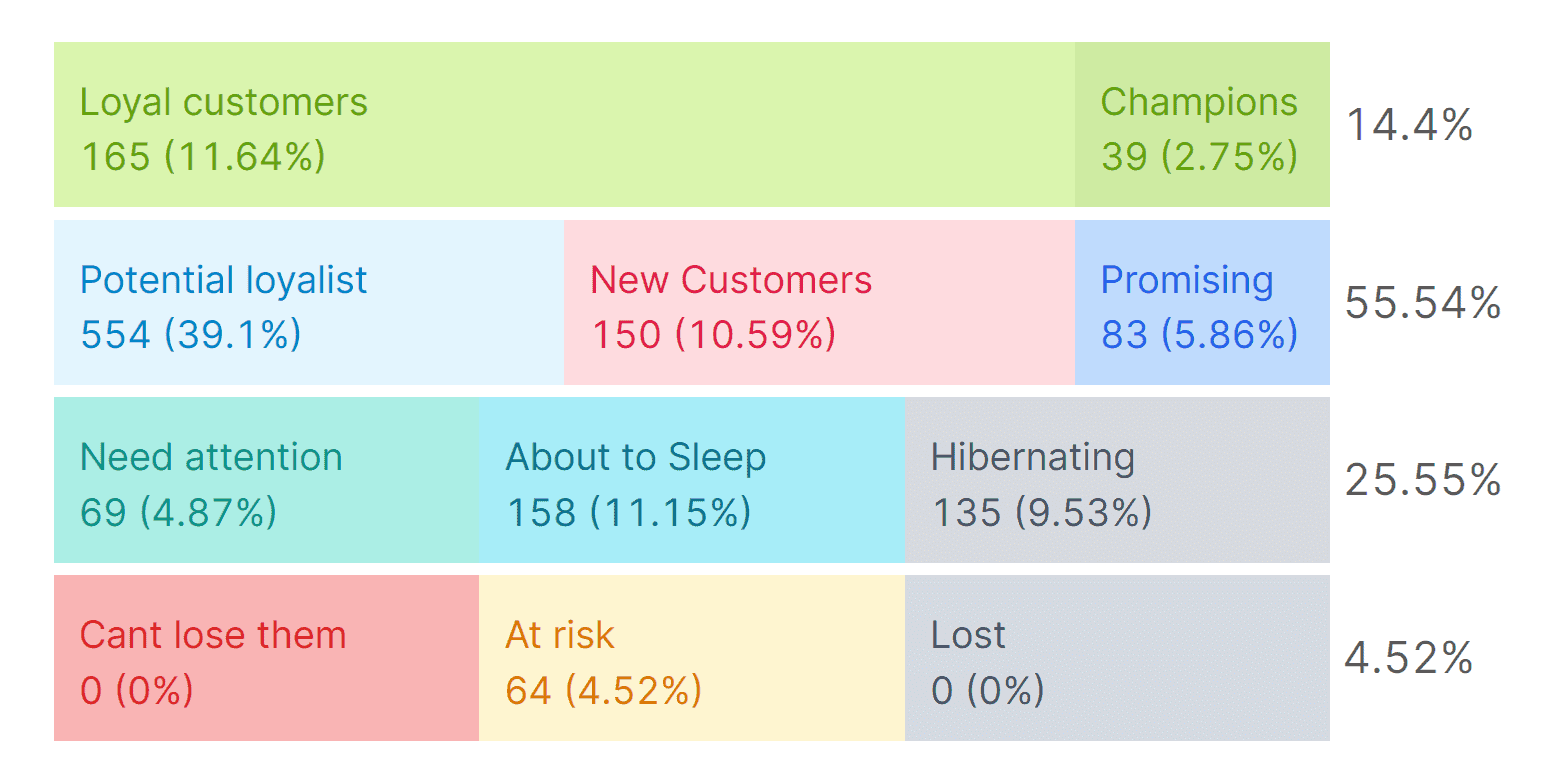
Putler offers RFM (Recency, Frequency, Monetary) segmentation, a powerful method for categorizing customers based on their purchasing behavior.
You can access this feature to increase profits and overall performance.
The in-built segments – champions and loyal customers for upselling opportunities, potential loyalists, and new customers – can be used for newsletter targeting, promotions, and more.
You can also use the other segments – hibernating and at-risk customers – for retargeting campaigns.
Products bought together

In the Products dashboard, once you click on the individual products, Putler presents comprehensive data specific to that product in a separate Products bought together section.
Here, you can find a list of customers who have purchased the product, along with information on the ones that have been bought together.
This data is valuable for identifying upselling opportunities and enhancing sales strategies.
Payment platform and refunds
As mentioned earlier, Putler allows integration of various payment processing platforms, and you can make full and partial refunds directly from Putler.
Apart from these, multiple other features are unique to Putler, including a Sales Heatmap, Activity Log, Sales Forecasting, and more.
What makes Putler a great Matomo alternative?
There are multiple avenues where Putler emerges as a compelling alternative to Matomo.
Let’s delve into what sets Putler apart and why it might be the ideal choice for your analytics needs.
Ease of use:
Putler boasts a user-friendly interface, contrasting Matomo’s reputation for complexity. Its intuitive design simplifies navigation, making it accessible even to newcomers.
E-commerce focused:
Putler offers tailored e-commerce analytics, catering directly to the needs of online businesses. In contrast, Matomo leans more towards web analytics, with fewer specialized e-commerce features.
Advanced filters and segmentation:
Putler offers robust filtering and segmentation capabilities, empowering businesses to delve deep into their data and uncover actionable insights.
This enables targeted analysis of audience segments, sales data, and website traffic, revealing valuable trends and opportunities.
Instant refunds:
Putler streamlines the refund process with a quick two-step system, facilitating instant refunds by swiftly identifying payment sources. Matomo lacks this functionality.
Cost-effective:
Opting for cloud-based servers and advanced analytics options can lead to hefty expenses with Matomo, ranging from $50 to $100 or more. In contrast, Putler offers plans starting from $20, making it a more cost-effective choice in the long run, even for advanced plans.
So, it’s quite clear that Putler’s user-friendly interface, tailored e-commerce analytics, advanced filtering capabilities, streamlined refund process, and cost-effectiveness position it as a strong alternative to Matomo.
Conclusion
Putler and Matomo each offer unique benefits and advantages. Therefore, making the right choice depends on the specific business requirements.
If data sensitivity and comprehensive web analytics are your priority, Matomo is the way to go.
Conversely, if your focus lies more on e-commerce and SaaS, Putler emerges as the preferred option.
Ultimately, the best choice is one that aligns closely with your business objectives and requirements.

